Four Techniques of Cupping Therapy and Correct Operating Methods
According to the severity of the patient’s condition, cupping therapy can be divided into four techniques: flash cupping, moving cupping, retained cupping, and bloodletting cupping.
● Flash Cupping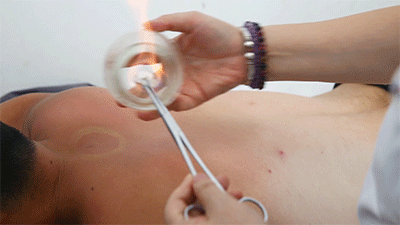 Steps❶ Wipe the area to be cupped with a cotton ball soaked in 75% alcohol.❷ Ignite a cotton ball soaked in 95% alcohol, insert it into the glass cup, and quickly remove it, placing the cup on the skin surface, then immediately lift it off.❸ Repeat the suction several times until the skin becomes red. Flash cupping usually does not leave marks on the skin and is the least stimulating of the four techniques.● Moving Cupping
Steps❶ Wipe the area to be cupped with a cotton ball soaked in 75% alcohol.❷ Ignite a cotton ball soaked in 95% alcohol, insert it into the glass cup, and quickly remove it, placing the cup on the skin surface, then immediately lift it off.❸ Repeat the suction several times until the skin becomes red. Flash cupping usually does not leave marks on the skin and is the least stimulating of the four techniques.● Moving Cupping Steps❶ Wipe the area to be cupped with a cotton ball soaked in 75% alcohol. Apply some lubricating medicine or liquid on the skin surface where cupping is to be performed. The choice of lubricating medicine varies based on the desired therapeutic effect. In this image, Zicao You (Lithospermum Oil) is used, which has blood-activating properties.
Steps❶ Wipe the area to be cupped with a cotton ball soaked in 75% alcohol. Apply some lubricating medicine or liquid on the skin surface where cupping is to be performed. The choice of lubricating medicine varies based on the desired therapeutic effect. In this image, Zicao You (Lithospermum Oil) is used, which has blood-activating properties.

 ❷ Ignite a cotton ball soaked in 95% alcohol, insert it into the glass cup, and quickly remove it, placing the cup on the skin surface, holding the cup, and moving it back and forth along the meridians. After moving cupping, if there are issues in the body, there will be large areas of cupping marks; if there are no issues, it will generally just leave cup marks that fade quickly.● Retained Cupping
❷ Ignite a cotton ball soaked in 95% alcohol, insert it into the glass cup, and quickly remove it, placing the cup on the skin surface, holding the cup, and moving it back and forth along the meridians. After moving cupping, if there are issues in the body, there will be large areas of cupping marks; if there are no issues, it will generally just leave cup marks that fade quickly.● Retained Cupping


 ❶ Ignite a cotton ball soaked in 95% alcohol, insert it into the glass cup, quickly remove it, place the cup on the skin surface, and leave it for 10-15 minutes before removing it, and clean the skin surface with a cotton ball.● Bloodletting Cupping
❶ Ignite a cotton ball soaked in 95% alcohol, insert it into the glass cup, quickly remove it, place the cup on the skin surface, and leave it for 10-15 minutes before removing it, and clean the skin surface with a cotton ball.● Bloodletting Cupping ❶ Wipe the area to be cupped with a cotton ball soaked in 75% alcohol.
❶ Wipe the area to be cupped with a cotton ball soaked in 75% alcohol. ❷ Use a disposable blood collection needle to prick the skin locally.
❷ Use a disposable blood collection needle to prick the skin locally. ❸ Retain the cup.
❸ Retain the cup. ❹ Remove the cup and clean the blood that has oozed out with a cotton ball.Cupping therapy has effects such as promoting circulation, invigorating blood flow, reducing swelling and pain, and dispelling wind and cold. What do the cupping marks left on the body indicate about health issues? Let’s explore “Cupping Mark Diagnosis” together.Cupping Mark Diagnosis
❹ Remove the cup and clean the blood that has oozed out with a cotton ball.Cupping therapy has effects such as promoting circulation, invigorating blood flow, reducing swelling and pain, and dispelling wind and cold. What do the cupping marks left on the body indicate about health issues? Let’s explore “Cupping Mark Diagnosis” together.Cupping Mark Diagnosis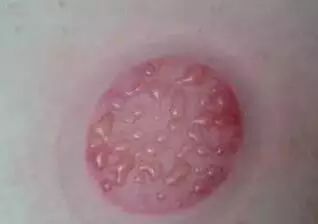
Cupping marks that show moisture, blisters, or edema indicate that the patient has excess dampness, cold, or has been affected by cold and dampness;

Cupping marks that are blood red or dark red blisters indicate a pathological response of long-term illness with dampness and blood stasis;
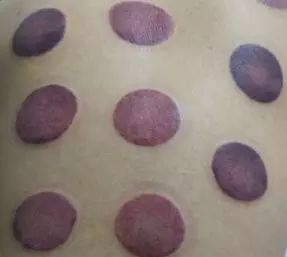
Cupping marks that are purple-red or purple-black, without stasis or fever, indicate that the patient has cold with blood stasis, with varying degrees of severity;
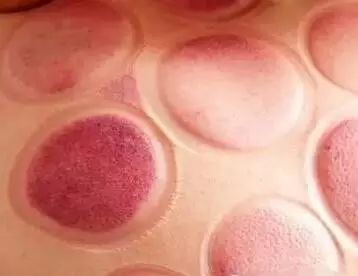
Cupping marks that are purple-red or purple-black, or show stasis, are slightly painful to touch, and are accompanied by body heat, indicate that the patient has heat toxin syndrome;
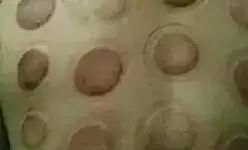
Cupping marks that are slightly itchy or show skin patterns indicate that the patient has wind syndrome;
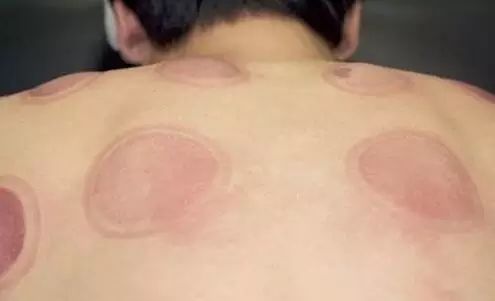
Cupping marks with no color change and feel cool to the touch indicate that the patient has deficiency-cold syndrome.
If there are no cupping marks or if the cupping marks disappear and return to normal color immediately after cupping, it indicates that the body is in a relatively healthy state.
If the marks do not fade after a few days, it indicates that the condition has been present for a long time, requiring more attention to treatment and care. As the condition improves, the cupping marks will also fade, indicating recovery.
Indications, Main Points, and Contraindications for Cupping
1. Indications and Main Points:
Respiratory System Indications
Acute and chronic bronchitis, asthma, pulmonary edema, pneumonia, pleuritis. Main points: Da Zhu (Dazhui), Feng Men (Fengmen), Lung Shu (Feishu), Ying Chuang (Yingchuang).
Digestive System Indications
Acute and chronic gastritis, gastric neuralgia, dyspepsia, hyperacidity. Main points: Gan Shu (Ganshu), Pi Shu (Pishu), Wei Shu (Weishu), Ge Shu (Geshu), Zhang Men (Zhangmen).
Acute and chronic enteritis. Main points: Pi Shu (Pishu), Wei Shu (Weishu), Da Chang Shu (Dachangshu), Tian Shu (Tianshu).
Circulatory System Indications
Hypertension. Main points: Gan Shu (Ganshu), Dan Shu (Danshu), Pi Shu (Pishu), Shen Shu (Shenshu), Wei Zhong (Weizhong), Cheng Shan (Chengshan), Zu San Li (Zusanli). Focus on the back and lower limbs.
Arrhythmia. Main points: Xin Shu (Xinshu), Shen Shu (Shenshu), Ge Shu (Geshu), Pi Shu (Pishu).
Insufficient blood supply to the heart. Main points: Xin Shu (Xinshu), Ge Shu (Geshu), Gao Huang Shu (Gao Huang Shu), Zhang Men (Zhangmen).
Musculoskeletal System Indications
Cervical joint pain, shoulder joint and scapular pain, elbow joint pain. Main points: Pressing points and surrounding joints for cupping. Back pain, lumbar pain, sacral pain, hip pain. Main points: Based on the location of pain and surrounding joints for cupping. Knee pain, thigh pain, heel pain. Main points: At the site of pain and surrounding joints, use small glass cups for cupping.
Nervous System Indications
Neurogenic headache, occipital neuralgia. Main points: Da Zhui (Dazhui), Da Zhu (Dazhu), Tian Zhu (Tianzhu) (with face cushion), Zhi Yang (Zhiyang).
Intercostal neuralgia. Main points: Zhang Men (Zhangmen), Qi Men (Qimen), and intercostal pain area for cupping.
Sciatica. Main points: Zhi Bian (Zhibian), Huan Tiao (Huantiao), Wei Zhong (Weizhong).
Peripheral nerve paralysis due to rheumatic damage. Main points: Da Zhui (Dazhui), Gao Huang Shu (Gao Huang Shu), Shen Shu (Shenshu), Feng Shi (Fengshi), and the affected area.
Cervical muscle spasm. Main points: Jian Jing (Jianjing), Da Zhui (Dazhui), Jian Zhong Shu (Jianzhongshu), Shen Zhu (Shenzhu).
Gastrocnemius muscle spasm. Main points: Wei Zhong (Weizhong), Cheng Shan (Chengshan), and the affected gastrocnemius area.
Facial nerve spasm. Main points: Xia Guan (Xiaguan), Yin Tang (Yintang), Jia Che (Jia Che), using small cups, only retain for 6 seconds, then remove, and repeat 10 to 20 times.
Diaphragmatic spasm. Main points: Ge Shu (Geshu), Jing Men (Jingmen).
Gynecological Indications
Dysmenorrhea. Main points: Guan Yuan (Guanyuan), Xue Hai (Xuehai), A Shi points.
Amenorrhea. Main points: Guan Yuan (Guanyuan), Shen Shu (Shenshu).
Menorrhagia. Main points: Guan Yuan (Guanyuan), Zi Gong (Zigong).
Leukorrhea. Main points: Guan Yuan (Guanyuan), Zi Gong (Zigong), San Yin Jiao (Sanyinjiao).
Pelvic inflammatory disease. Main points: Zhi Bian (Zhibian), Yao Shu (Yaoshu), Guan Yuan Shu (Guanyuanshu).
Indications for Surgical Wounds and Ulcers
Boils. Main points: Shen Zhu (Shenzhu), and the boil area, using small cups with face pads for cupping.
Multiple folliculitis. Main points: Zhi Yang (Zhiyang), local small cups with face pads for cupping.
Lower limb ulcers. Main points: Local small cups with face pads for cupping.
Acute mastitis. Main points: After applying a warm towel soaked in hot water to the area, use medium or large cups for cupping, can be repeated 5-6 times.

2. Contraindications for Cupping
High fever, convulsions, spasms; skin allergies or ulcerated areas; areas with thin muscles or uneven bones and areas with excessive hair are not suitable for application; pregnant women should be cautious with cupping on the lumbar and abdominal areas.
3. Cupping Precautions
1. Do not take a cold shower or drink cold beverages within two hours after scraping and cupping; if taking a shower after two hours, use warm water.
2. Do not use air conditioning or fans during scraping and cupping to avoid air convection.
3. Avoid scraping when overly full, hungry, or after drinking; wait one hour after meals before scraping or cupping.
〖Organ Regulation 12 Sections〗〖Five Elements 16 Sections〗〖Tongue Diagnosis, Hand Diagnosis, Face Diagnosis, 60 Sections〗〖Five Movements and Six Qi 26 Sections〗〖Fasting 17 Sections〗〖Pediatric Tuina 20 Sections〗〖San Jiao Regulation 10 Sections〗〖Twelve Meridians 12 Sections〗〖Ear Acupuncture 21 Sections〗〖San Fu Moxibustion 12 Sections〗〖Guided Movement + Five Animal Play 24 Sections〗〖Gynecological Disease Regulation 20 Sections〗〖Shang Han Lun 13 Sections〗〖Zhu You Technique 20 Sections〗〖Root Chakra Regulation 20 Sections〗〖Eight Methods of the Spirit Turtle 20 Sections〗〖Introduction to Acupuncture Techniques Video 5 Sections〗〖Postpartum Rehabilitation 20 Sections】〖Moxibustion Guidance】Scan the QR code below to participate in the learning


